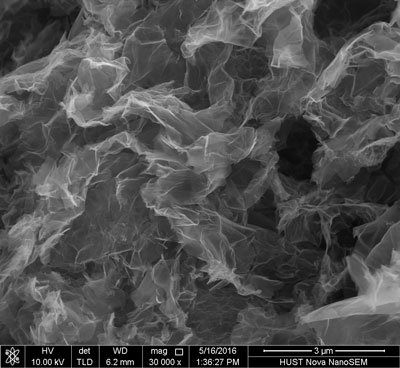Synthesis of two-dimensional metal oxides and hydroxides-high yield, high efficiency, fast and low cost
QQ Academic Group: 1092348845
Detailed
| As two-dimensional (2D) materials become more important-due to their bizarre electronic properties and rich active sites-developing high-yield, efficient, fast, and low-cost synthetic methods to move these materials from industrial laboratories has become a top priority. | |
| "Previous research has shown that ions always play a key role in the synthesis of 2D materials," Zhou Jun, a professor at Huazhong University of Science and Technology and a professor at Wuhan National Optoelectronics National Laboratory, told Nanowerk. "However, it should be noted that when the synthesis is performed in solution, deionization is an essential step because the ions are in a solvated state in the solution. Unfortunately, the energy consumption of desolvation increases Increases the total activation energy and therefore limits the reaction rate. " | |
| In the new work, a team led by Zhou has developed a universal and fast molten salt method (MSM), which has been extensively studied for the synthesis of nanomaterials such as graphene and perovskite, which can synthesize various ion-embedded 2D metal oxides and hydroxides, such as manganese oxide as cationic intercalation, tungsten oxide of cationic intercalation, and metal hydroxide of anionic intercalation. | |

|
|
| Proposed two-dimensional ion-embedded metal oxide and hydroxide molten salt synthesis mechanism. When metal ions from the precursor react with nitrate or H 2 O , MO x or M (OH) x (M stands for metal) molecules are formed . During the self-assembly process of these MO x or M (OH) x molecules , the molten salt is rapidly arranged in a 2D plane and guides the growth of the 2D structure. (© Nature Publishing Group) (Click on the image to enlarge) | |
| " Natural Communication" ( "Fast Mass Production of Two-Dimensional Metal Oxides and Hydroxides by Molten Salt Method" ) reports that the most important result of this work is the ability to achieve high levels of chemistry in as little as 1 minute by using very inexpensive methods Quality 2D materials. And common sources | |
| This is an important step towards the commercialization of 2D materials. | |
| "The key feature of our method is the use of bare ions directly without hydration in molten salts to quickly induce the growth of 2D metal oxides and hydroxides," Zhou explained. "In our technology, we only need to add the precursor to the low-cost molten salt for only 1 minute, and we can obtain high-yield 2D materials by simply washing the salt. Granular or nanowire products were observed in the final product. " | |

|
|
| SEM image of Na 0.55 Mn 2 O 4 • 1.5H 2 O (Photo: Wuhan Optoelectronics National Laboratory) (click image to enlarge) | |
| To demonstrate its potential application of two-dimensional ion-embedded metal oxides and hydroxides in energy storage, the team printed a flexible solid-state supercapacitor based on carbon nanotube (CNT) -coated A4 paper (as a current collector), And coated with carbon nanotubes. Two-dimensional dispersion of Na 2 W 4 O 13 . | |
| Researchers believe that these supercapacitors have good electrochemical performance and excellent rate performance, proving the potential applications of these two-dimensional ion-embedded metal oxides and hydroxides in energy storage and other fields. |
"Although we have only reported eight 2D ion-embedded metal oxides and hydroxides, the versatility of this molten salt synthesis process has led us to believe that rational adjustment of precursors and molten salts will allow the synthesis of various 2D oxides And hydroxides, and the accessible range of oxides and hydroxides can be extended to other 2D materials that are attractive. "Zhou concluded.
Source: Nanowerk
- Previous: Professor Hu Yong and
- Next: A Rising 2D Star: Nove


 Academic Frontier
Academic Frontier
